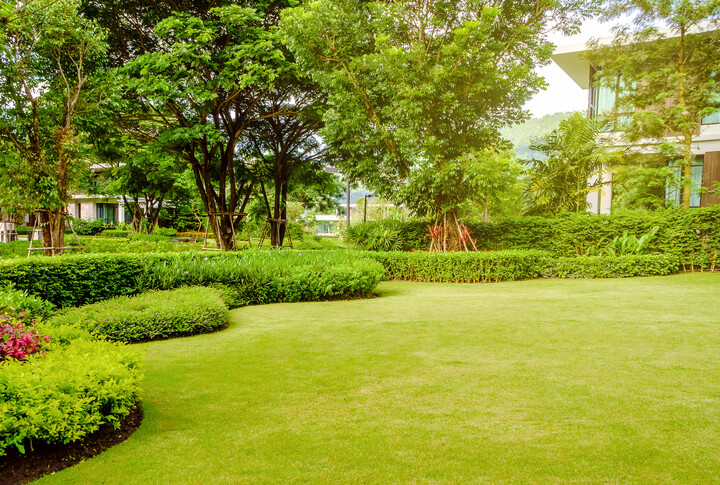If you’re tired of watching grass grow from the ground, learning how to lay some sod is your most time and cost-efficient solution to creating a bed of greens instantaneously. At New Life Rockeries, questions about sod installation and peculiar requests for sod laying tips comprise a good chunk of our customer service calls.
Landscapers and architects also call sod grass and turf. Sod is a grass that professionals harvest with its roots intact in a slim layer of topsoil that they then apply to front and back lawns.
In this explainer, our professionals will detail how to plant sod grass the right way and which steps of the residential sod installation process would benefit from professional help.
Measure Your Lawn Area
Most sod vendors will require a measurement of your yard area in square feet before completing your order. Measure the width and length of your yard and determine how many sod rolls you need. Most sod rolls are 24 inches in length and 81 inches in height, and they’ll cover 13.5 square feet of yard space.
Prepare The Soil
Soil prep is a vital part of sod laying. Here’s how you do it.
- Clear your lawn of rocks, weeds, and debris
- Remove dead or old grass before rotor tilling
- Level your yard and establish a stable grade
- Put down mulch or compost at a rate of 29 square feet per thousand
- Rotor till the compost into the soil about six feet deep
Lay Your SOD, Fill in Gaps
Slightly wet the soil with a hose or sprinkler and erase your footprints with a rake. Unroll your sod and ensure that its topsoil layer makes complete contact with your yard. Start at the longest edge of your yard, laying down sod in a brick-wall arrangement without lapping the edges.
Roll Out Your Lawn
After laying sod, use a lightweight lawn roller to eliminate air pockets and ground the roots into the soil. Continue rolling until your feet no longer sink into the sod when walking over it.
Give SOD a Good Soaking
Irrigate your sod by immersing it about three inches deep in water, which will saturate the soil and keep your sod moist even in high temperatures.
Advantages of Sod
Sod offers more reliable growing success than seeds.
Sod may be more expensive than seeds, but it has many times the growth and germination rates of fresh grass.
Relatively weed-free establishment.
If you remove all weeds from your lawn before laying sod, your grass can live weed-free lives for years without herbicide.
Sod gives you an instantly green lawn.
Learning how to lay a sod patch gives you the strategic advantage of transforming your lawn from a dirt-brown wasteland to a lush green paradise in one day.
FAQs About Installing Sod
Can I install sod over my pre-existing grass?
No. New sod requires direct contact with the topsoil on your lawn to form new root systems.
How much does a lawn roller cost?
Lightweight poly lawn rollers cost $140 to $249.
How long does it take for the sod to take root?
Fresh sod takes at least 14 days to root. Setting your lawnmower to a higher-than-usual cutting height is the last step to laying sod. You don’t want to cut too close to its fledgling root systems.
Contact Us Today and Learn How to Lay Sod the Right Way
Planting sod requires careful planning and preparation to avoid wasting your investment on dead rolls of grass. In an age where people can move across states and sell their previous homes in a month, learning how to install sod grass can help thousands of people improve their curb appeal without spending a fortune on remodeling costs.
Learn how to lay sod the right way by contacting New Life Rockeries today.

